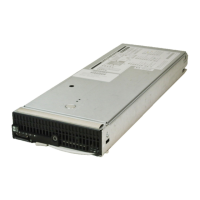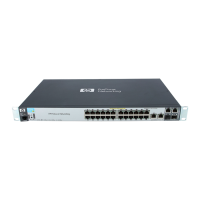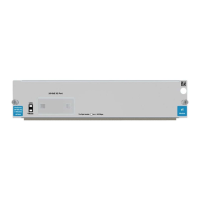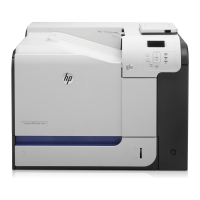Glossary
Guardian User’s Guide—425266-001
Glossary-14
server.
server. (1) An implementation of a system used as a stand-alone system or as a node in an
Expand network. (2) A combination of hardware and software designed to provide
services in response to requests received from clients across a network. For example, the
NonStop™ Himalaya range of servers provides transaction processing, database access,
and other services. (3) A process or program that provides services to a client or a
requester. Servers are designed to receive request messages from clients or requesters;
perform the desired operations, such as database inquiries or updates, security
verifications, numerical calculations, or data routing to other computer systems; and
return reply messages to the clients or requesters. A server process is a running instance
of a server program.
ServerNet adapter. A customer-replaceable unit (CRU) that connects peripheral devices to
the rest of the system through a ServerNet bus interface (SBI). A ServerNet adapter is
similar in function to an I/O controller logic board (LB) and backplane interconnect card
(BIC) in NonStop™ Himalaya K-series servers.
ServerNet address. (1) An algorithmic translation of the memory address indicating where
the memory access needed by a ServerNet transaction begins. This is the address
contained in ServerNet packets. (2) An identifier for an endpoint on the ServerNet
system area network (ServerNet SAN). This address consists of a ServerNet node ID
and an identifier that is unique within that ServerNet node.
ServerNet addressable controller (SAC). A controller that is uniquely addressable within
one or more ServerNet address domains (SADs) through the node ID and address fields
in a request packet. A SAC is typically implemented on some portion of a processor
multifunction (PMF) customer-replaceable unit (CRU), an I/O multifunction (IOMF)
CRU, or a ServerNet adapter.
ServerNet LAN systems access (SLSA) subsystem. The software that allows the protocol
I/O processes (IOPs) and drivers to access the ServerNet adapters.
ServerNet System Area Network (SAN). A wormhole-routed, full-duplex, packet-switched,
point-to-point network designed with special attention to reducing latency and ensuring
reliability. The ServerNet SAN provides the communication path used for interprocessor
messages and for communication between processors and I/O devices.
ServerNet Wide Area Network (SWAN) concentrator. A Compaq data communications
peripheral that provides connectivity to a NonStop™ Himalaya S-series server. The
SWAN concentrator supports both synchronous and asynchronous data over RS-232,
RS-449, X.21, and V.35 electrical and physical interfaces.
service connection. A connection between the Compaq Tandem Service Management (TSM)
client software running on a workstation and the TSM server software on a NonStop™
Himalaya S-series server. A service connection can be used only to communicate with
the server when the NonStop™ Kernel operating system is running. A service
connection provides a comprehensive service and maintenance picture of the server and
is used to perform most service management tasks.

